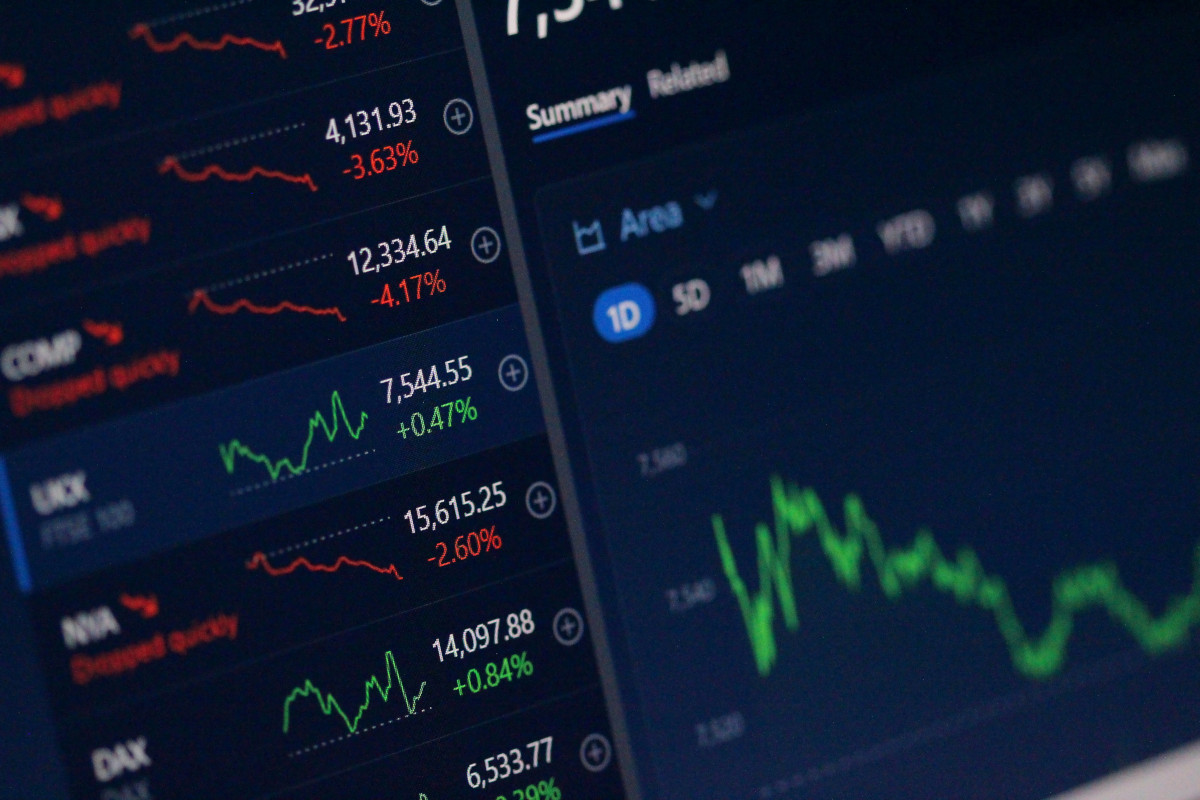So much emphasis is placed on finding the best time to buy stocks, and rightfully so. After all, getting in at the right price is what gives you room for profit potential while ensuring you receive your dividend payout.
However, learning when to sell dividend stocks is just as important. Wait – should you EVER sell your dividend stocks? Sure – there are plenty of situations in which this makes sense.
Maybe you only purchased shares of the stock to become an investor of record so you could be paid out the quarterly dividend – and once you’ve earned the cash, you want to move on to the next opportunity.
Or, perhaps you’re worried about deteriorating company performance leading to suspended or cut dividends. Maybe you’ve just found a better opportunity! Whatever the case, we’ll walk you through when to sell a stock for profit below.
If you want to save yourself time and stress associated with managing your portfolio, consider using VectorVest’s stock software. It eliminates all the guesswork and uncertainty associated with stock analysis and gives you a clear buy, sell, or hold recommendation for any stock at any given time.
See how it works for one of the stocks you’re holding with a free stock analysis today!
Should You Ever Sell Your Dividend Stocks?
This is one of the most common questions we get asked by those building a stock portfolio with dividend stocks. Can you sell dividend stocks? Perhaps more importantly, should you ever sell your dividend stocks?
After all, the entire purpose of this stock investment strategy is long-term income generation. The last thing you want is to end up spinning your tires and failing to reach your retirement goals.
But, there are many valid reasons to consider selling your stocks. It might be appropriate if there are fundamental changes in the company or its industry that negatively impact its ability to sustain dividends.
This could include a deterioration in the company’s core business operations, financial instability, or shifts in market conditions that alter the business landscape in a negative manner.
Strategic portfolio adjustments might mean you need to sell certain dividend stocks, too. For example, rebalancing your portfolio to maintain a desired retirement asset allocation or risk level, or shifting investment focus due to changes in your financial goals or life circumstances.
That being said, let’s get into when to sell dividend stocks below to help you exit your positions at the perfect time.
When to Sell Dividend Stocks: Before or After Dividend Payouts?
Most people reading along are likely wondering whether they should sell their stocks before or after dividend payouts. There are pros and cons to each approach. We’ll cover these below along with a few other instances when you should consider selling shares.
Should You Sell Before or After a Dividend?
There’s a tradeoff between selling your stock before the dividend when share prices tend to be higher, and selling after the dividend for a lower return but gaining the dividend payout itself. That’s not the only consideration, though – there are a few other things to keep in mind.
The ex-dividend date is the cutoff day to be eligible for the next dividend payout. If you sell before this date, you won’t receive the upcoming dividend. Selling after this date means you secure the dividend, but the stock price may drop by the amount of the dividend on the ex-dividend date, reflecting the payout.
If your strategy is income-focused, holding the stock to collect dividends might make sense. However, if you’re reallocating assets or taking profits, selling before the dividend can help avoid the potential price drop when dividends are paid out.
There are tax implications to consider as well. Selling before a dividend payout means you avoid receiving the dividend, which could be beneficial if you’re in a high tax bracket. Dividends are typically taxed as income, so not receiving them might reduce your tax liability for the year.
On the other hand, you’ll have additional taxable income to take care of if you sell after receiving the dividend, but you benefit from the extra cash. Ultimately, only you can determine which approach makes the most sense.
Other Instances in Which Selling Dividend Stocks Makes Sense
Selling dividend stocks might not only be a strategic choice but a necessary one under certain circumstances. If a company shows signs of prolonged operational weaknesses – such as declining profits, increasing debt levels, or loss of competitive edge – there may be potential trouble ahead, including unstable dividend payouts.
This is why it’s so important that you monitor financial statements and industry news closely, as deteriorating fundamentals can erode investment value and jeopardize future dividends.
When a company announces a dividend is being cut or suspended, share prices will fall rapidly. Being among the first to know about these problems can help you cut losses fast and avoid the ensuing fallout.
There may also come a time when you realize you’re not necessarily invested in the best blue chip dividend stocks or the safest dividend stocks any longer.
Better opportunities may arise that align more closely with your financial goals or risk tolerance. Thus, reallocating funds from underperforming or less promising dividend stocks might lead to better overall portfolio performance.
Again – this is why constantly screening for the highest dividend stocks is so important. You should always be looking for the next opportunity to ensure your portfolio evolves with the market rather than lags behind it.
How to Sell Dividend Stocks to Capture the Full Profit Potential
You know when to sell dividend stocks – now let’s talk about how to sell dividend stocks. Here are some tips to help you maximize profit potential and avoid sellers’ remorse.
Evaluating Market Conditions
First, take the time to review market conditions and make sure it’s actually a good time to sell your stocks. Look for economic indicators such as interest rate changes, inflation rates, and GDP growth, as these can significantly impact stock performance.
You should also evaluate sector-specific trends. For instance, real estate stocks might be affected differently by market conditions than technology stocks.
Use reliable free stock research sites and market analysis tools to gather data and forecast potential market movements. We’ll show you the best stock research sites in just a few moments.
Timing Your Exit
Just as figuring out when to buy the dip is important for giving yourself room for profit, determining the best time to sell a stock is key to capturing those profits. This can be complex and cumbersome, but you can rely on the best stock indicators to offer clarity here.
Use tools like moving averages and relative strength index (RSI) to determine the best time to sell based on stock performance trends. If a stock falls below key moving averages or has an RSI suggesting it’s overbought, it might be time to consider selling.
You should also keep an eye on the company’s quarterly financial results. Signs of declining revenue, shrinking margins, or increasing debt levels can indicate that it’s time to exit before potential declines in stock price.
What Now?
Now comes the fun part – actually selling your stock. Set a price target based on thorough analysis and realistic expectations of stock performance. Then, determine the type of sell order that best suits your needs.
A limit order allows you to set a specific price at which the stock should be sold so you have more control over the selling price. On the other hand, a market order will sell at the best available price once the order is placed, which is useful in rapidly changing market conditions.
After successfully closing your position it’s just a matter of planning out how you will reinvest the proceeds from the sale. We have tips on how to pick a stock, or more specifically, how to find undervalued stocks that offer great promise for capital appreciation.
Investing in Dividend Stocks Doesn’t Have to Be Complicated!
You can see why figuring out when to sell dividend stocks is so daunting for new investors, but even seasoned experts have trouble with this. There are so many moving pieces, and there is no telling what will happen with a stock after selling – which can lead to a ton of anxiety.
As we’ve said a few times throughout this guide, though, you don’t have to navigate any of this process on your own. You can leverage the best stock analysis app to eliminate emotional selling, human error, and guesswork from your decision-making.
VectorVest’s stock advisory services help you cut through the noise and feel more confident. The proprietary stock trading system tracks and ranks 16,000+ stocks daily, assigning each a buy, sell, or hold rating.
It’s all based on 3 simple indicators: relative value (RV), relative safety (RS), and relative timing (RT). Each is placed on a scale of 0.00-2.00 with 1.00 being the average, making interpretation quick and easy.
Beyond helping you analyze a stock before buying and figuring out when to sell, the system constantly curates a list of stock picks that help you find your next opportunity.
Whether you’re looking for dividend vs growth stocks, you can leverage VectorVest’s screeners. We have separate scanners set up for the best beginner stocks, aggressive stocks to buy now, falling stocks, the most volatile stocks, and more!
The system has outperformed the S&P 500 index by 10x over the past 20 years and counting. So, why not simplify your own trading strategy with the best investment apps for beginners today? A free stock analysis is just a few clicks away!
Closing Thoughts on When to Sell Dividend Stocks
That does it for our guide on when to sell dividend stocks and how to sell dividend stocks! This is a decision that goes beyond capturing immediate profits.
Whether responding to deteriorating company fundamentals, dividend adjustments, or capitalizing on better investment opportunities, tools like VectorVest can help you time your exit to perfection.
We have more resources on dividend stocks for beginners in our blog, including how often do dividend stocks pay, how to invest in dividend stocks for passive income, how to retire on dividends, are dividend stocks worth it, how to invest in blue chip stocks, where to put retirement money after retirement, or the best day to sell stocks.
Remember, the best stock picking app can help you find winning opportunities on autopilot and manage your portfolio to perfection – so you never have to wonder when to sell dividend stocks again.
Whether you’re looking for the best stock app for Android or the #1 iPhone stocks app, VectorVest is here to help. Try the system today with a free stock analysis and see how much easier complex analysis can be!








Leave A Comment